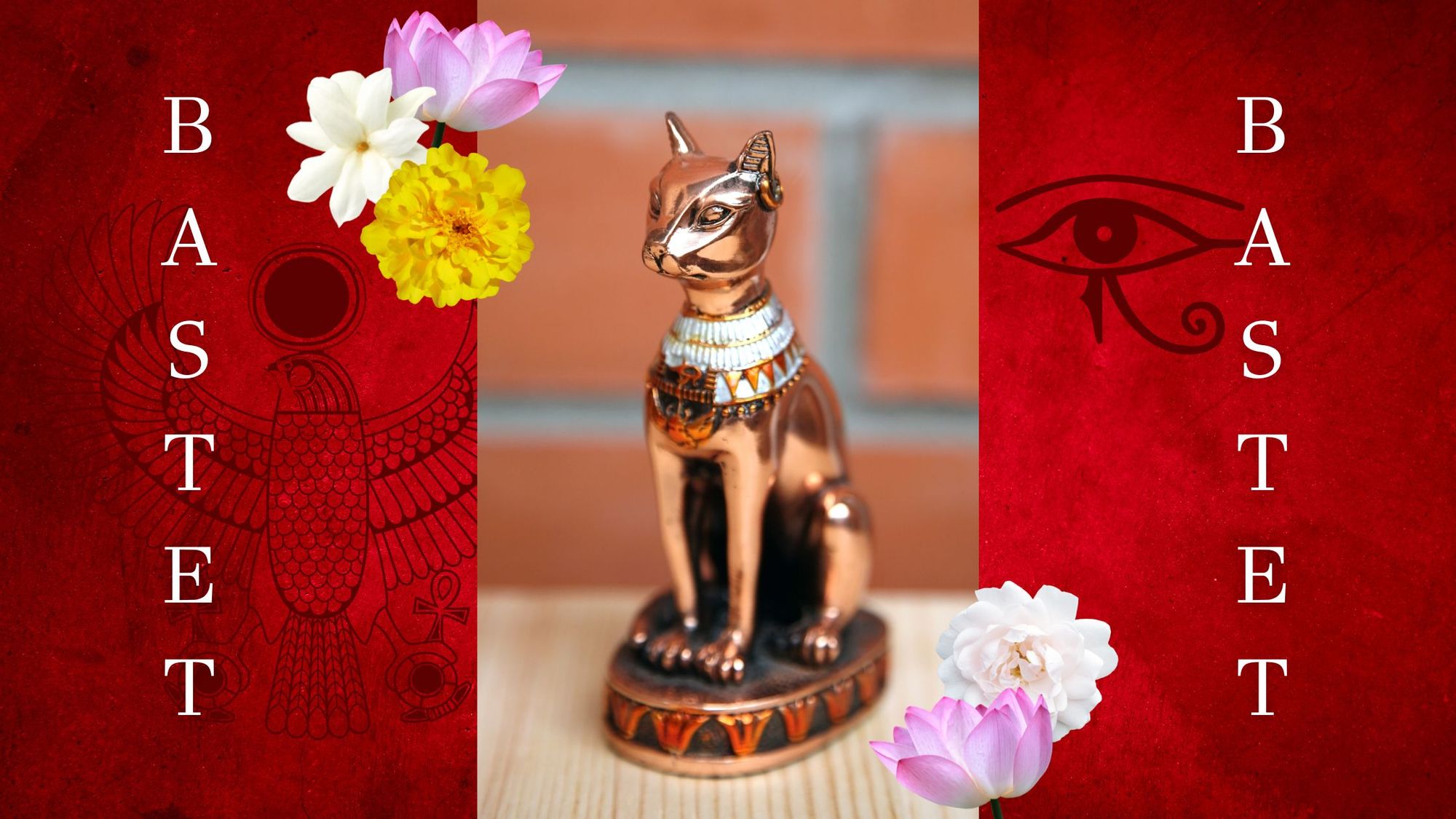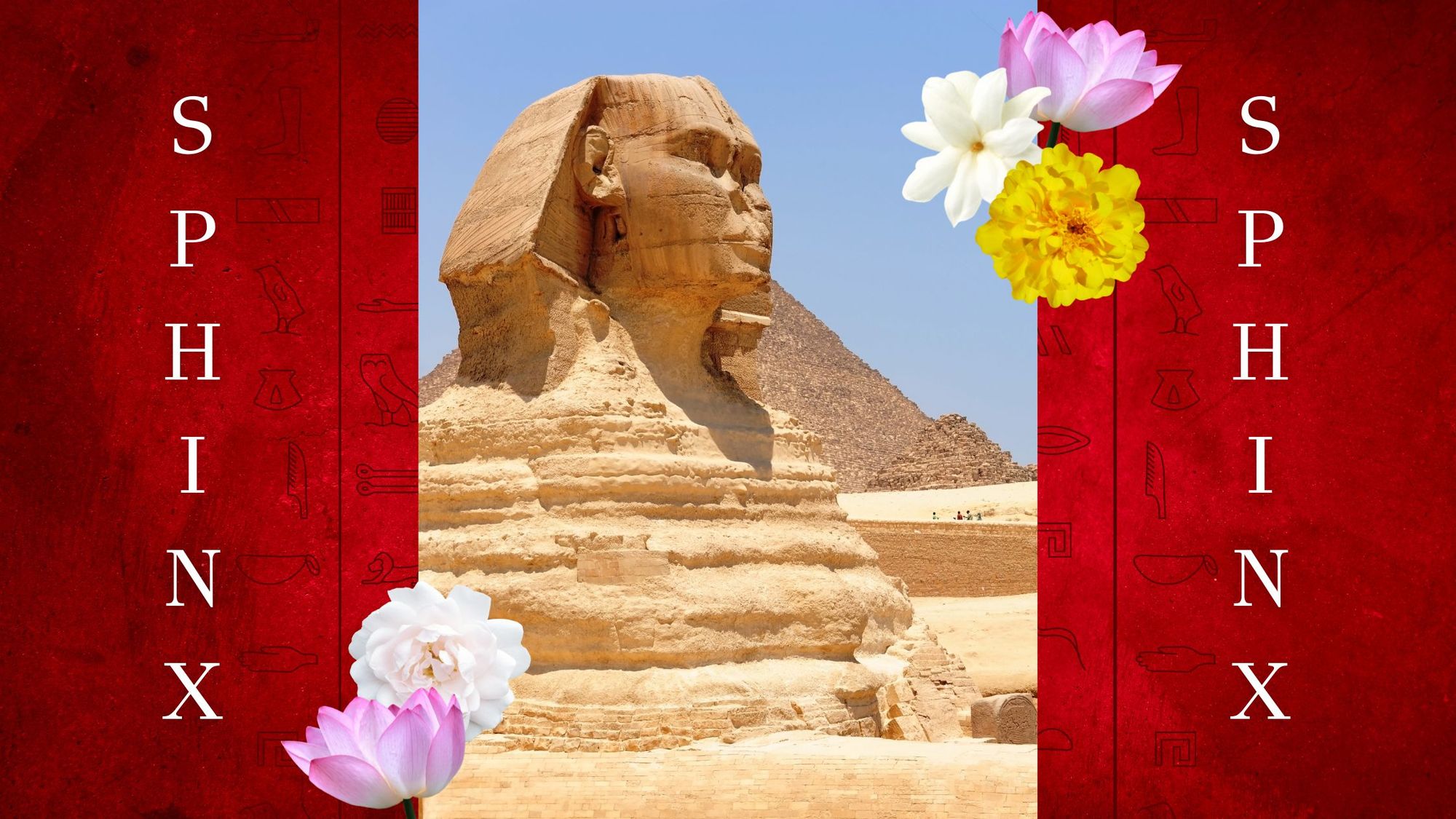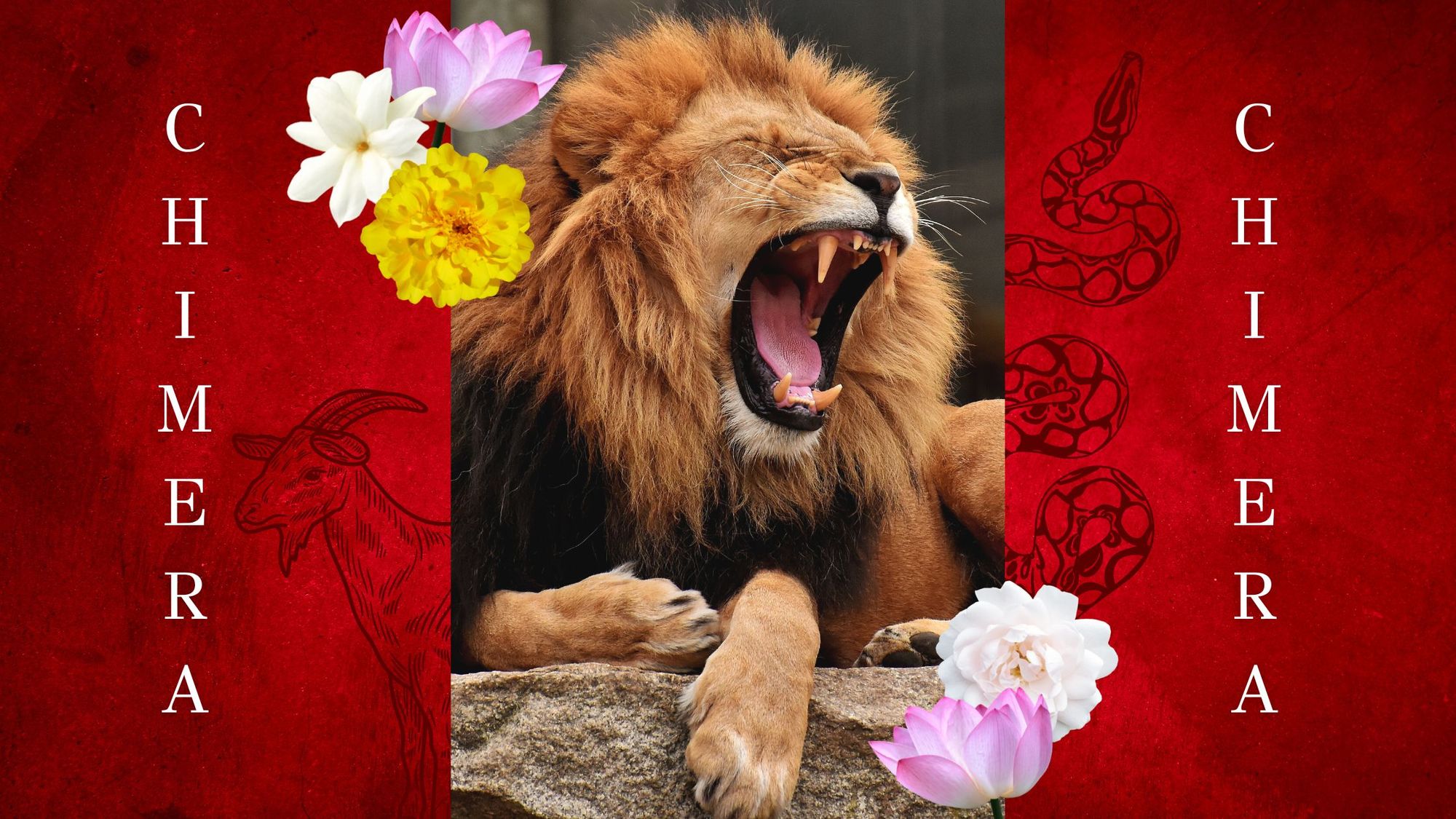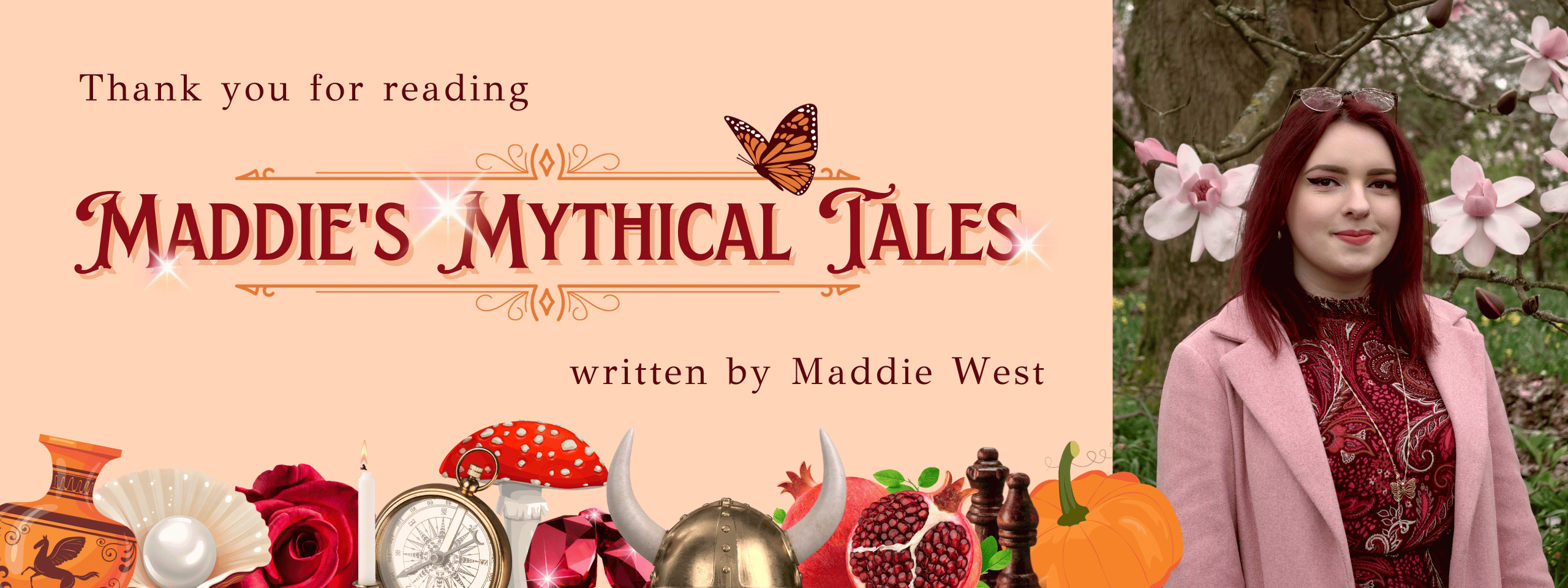5 Cat Gods, Goddesses and Mythical Creatures
👑🐈✨ If you have a cat or kitten as your beloved pet companion, you may have noticed they love to be doted on and treated like a God/Goddess. Read on to discover why they have this attitude by exploring Egyptian Mythology, Greek Mythology, Norse Mythology, and Japanese Folklore ✨🐈👑

If you're the proud owner of a beloved cat, you'll know that they consider themselves to be mini Gods, and should be treated as such by us feeble humans.
So hopefully this blog post will give you a bit of insight and understanding as to where they get this mightier-than-though attitude from.
It's well known that cats are considered to be superstitious and spiritual creatures, and this societal opinion has remained the same for centuries.
Therefore it's no surprise that cats have made their way into the most famous ancient mythologies across the globe, and appear as deities or familiars to Gods and Goddesses.
Take a deep dive into the history of cats in ancient civilisations in the World History Encyclopedia article here.
And come take a prowl with me through the ancient mystical world of cats in mythology.
Bastet
Mythology: Ancient Egypt

Bastet (also known as Bast) is the Egyptian Goddess of the hearth/home, fertility, war, protection, celebrations, secrets, and you guessed it... cats.
The roles of the Gods in the Egyptian pantheon were often fluid, hence why there are quite a few areas that Bastet held dominion over. This also helps to explain why in some forms she is seen as a woman with a lioness' head, and in other forms, she is depicted as a seated cat or a woman with the head of a cat.
Bastet also acted as one of the 4 Goddesses to carry the Eye of Ra (the others being Sekhmet, Hathor, and Neith). The majority of these 4 Goddesses have lioness qualities to show their fierce and protective natures over Ra, the God of the Sun, from his enemies.
In Ancient Egypt, Batest's popularity rose and so did the public's opinion of cats - even by the Pharaohs. Cats were adored and worshipped as sacred animals, and they became domesticated as pets to help protect households and ward off evil. Trinkets and amulets of Bastet in her cat form were also carried around or used to furnish homes. This is because it was believed that Bastet worked her divine magic through cats.
If anyone happened to kill a cat (even if by accident) they would be sentenced to death - the Ancient Egyptians certainly didn't mess around when it came to cats!
Sphinx
Mythology: Ancient Egypt & Ancient Greece

These human/lion hybrid creatures have appeared in both Egyptian and Greek legends. With the head and bust of a human, and the body of a powerful lion, you definitely wouldn't want to get on the wrong side of one of these mythical creatures.
In Egyptian mythology, the Sphinx was less of a magical creature, and more of a symbol of (supposedly) King Khafre's reign as Egyptian Pharoah in the 4th Dynasty of the Old Kingdom.
There's a really interesting historical article published by The Smithsonian here. It goes into detail about how this monolithic monument of a Sphinx (with King Khafre's head) was discovered, who created it, and discusses if it was built as part of a grander scheme to harness the power of the Sun to bring about ~ immortality ~.
And in Greek mythology there existed a Sphinx that guarded the city of Thebes. It had the head and bust of a beautiful woman, the body of a lioness, and the elegant wings of an eagle.
Due to the city of Thebes angering the Greek Gods, the Sphinx was tasked by Hera and Ares to not allow anyone to enter or leave the city unless they could solve the riddle that was taught to it by the Muses: What creature goes on four feet in the morning, two feet at noon, and three feet in the evening?
Oedipus, a legendary Greek hero, was able to solve this riddle, and so the creature threw herself off of a mountain top in despair.
The Greeks were all about the drama!
(Also, the answer to the riddle is a human - as a baby they crawl on their hands and feet in the morning of their life, as an adult they walk on two feet in the noon of their life, and as an elderly person they use a walking stick to walk in the evening of their life. Hands and feet = 4. Two Feet = 2. Two feet and a walking stick = 3.)
Chimera
Mythology: Ancient Greece

Greek mythology had some pretty badass animal hybrid monsters, and this is one of them!
The Lycian Chimera consisted of the head & body of a male lion, an additional head of a goat that sprouted from her back, and a tail that ended with a venomous snake head. Definitely a terrifying mix!
Then again, she is the daughter of Typhon (God of Storms and Monsters/one of the deadliest monsters in Greek Mythology) and Echidna (half Nymph & half monster, who is considered the Mother of all monsters). So terrifying is to be expected.
This also means that the Chimera is sibling to other notorious Greek mythological monsters such as the Nemean Lion, the Hydra, Cerberus, Ladon, the Sphinx, and many more...
Feline traits were a definitely common occurrence in Greek monsters, such as the Chimera and Sphinx, and goes to show how lions and cats were meant to be feared and respected creatures!
Bygul and Trjegul
Mythology: Norse

When you imagine a Norse Goddesses' chariot, you'd expect the chariot to be pulled by horses or wolves.
However, Freya (Goddess of Love, Sorcery, War, Health and Fertility) being the absolute legend that she is, had her chariot pulled by two male floofball Norwegian Forest cats named Bygul and Trjegul.
They were gifted to her by Thor (God of Thunder, War, and Fertility), and this breed has been favoured by Freya and her followers ever since.
The tale of how Thor came into possession of Bygul and Trjegul was that he was one day fishing and soon fell asleep. He was then suddenly awoken by a terrible screeching noise and when he went to investigate, he found a magical cat named Bayun and his two kittens.
Bayun told Thor that he had been struggling to get his two kittens to sleep after he had been left all alone with them when their mother abandoned them. Having asked Thor for his help, Thor came up with the idea to gift the beautiful kittens to Freya. And with that, Bayun shape-shifted into a bird and flew away.
Maneki Neko
Mythology: Japanese

You've probably seen this kawaii white (or gold) cat waving at you hundreds of times before, but do you know why it's so commonplace?
The Maneki Neko, which means 'beckoning cat' in Japanese, is said to be a lucky cat that brings good fortune and wealth to whoever owns it.
It's usually seen with a red collar and bell, and sometimes a bib, as this is how cats were usually dressed by the wealthy in the Edo period of ancient Japan.
They can be seen holding coins, a gold slab, a gem, a mallet, or a fish to help enhance the attraction of good fortune
Also, if the Maneki Neko is waving with its left paw, this is to attract customers and business. And if it's waving with its right paw, then it will attract wealth and fortune.
The origin story behind the Maneki Neko is said to be that an ancient ruler in the Edo period of Japan was sitting beneath a tree during a thunderstorm, and a cat sitting in a temple ushered him towards it.
As he ran from his cover under the tree to the temple, lightning struck where the tree was. As a token of his appreciation for saving his life, the ruler created a shrine to honour the cat for centuries to come, and still remains today if you go to Gōtoku-ji temple in Setagaya-ku, Tokyo.

On Maddie's Mythical Tales, you can discover enchanting places to travel, fantasy news and updates, and tips to bring magic to your everyday life!
You can stay up-to-date on Instagram, X (Twitter) and on Pinterest.
And Sign Up to be notified when a new blog post gets released by clicking the red 'Subscribe' button.
Currently residing in West Sussex, Maddie is a 26 y/o blogger and illustrator with a passion for mythology, legends, fairytales & folklore. You'll regularly find her escaping into fantasy books, films, TV, and games.




Comments ()